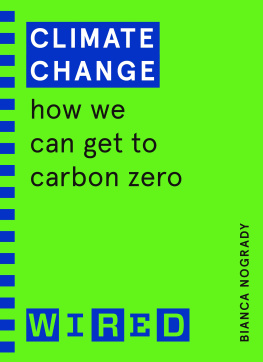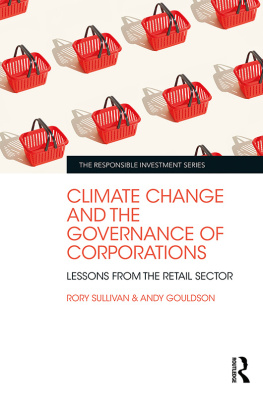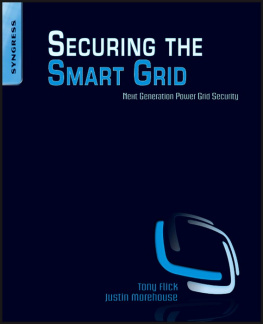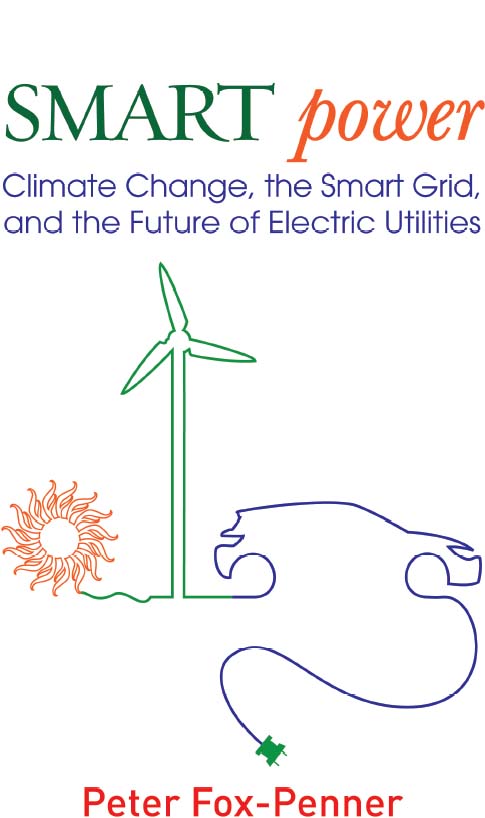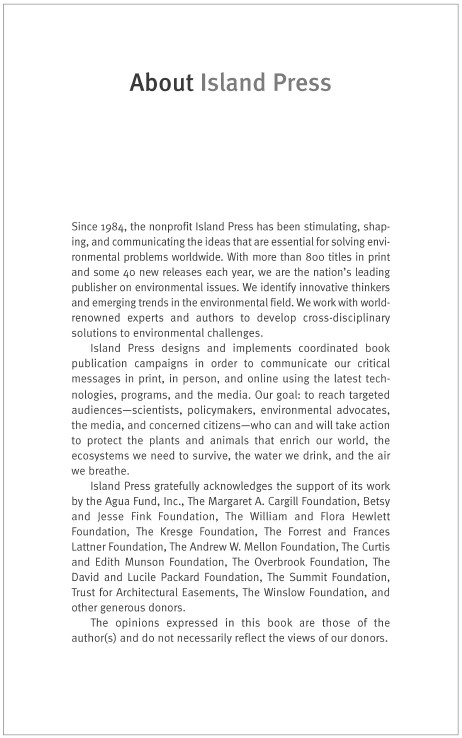All rights reserved under International and Pan-American Copyright Conventions. No part of this book may be reproduced in any form or by any means without permission in writing from the publisher: Island Press, Suite 300,1718 Connecticut Ave., NW, Washington, DC 20009
ISLAND PRESS is a trademark of The Center for Resource Economics.
ISBN 978-1-59726-705-2 (cloth: alk. paper)
ISBN 978-1-59726-706-9 (pbk.: alk. paper)
1. Electric utilitiesDeregulationUnited States. 2. Electric power distributionUnited States. 3. Power resourcesUnited States. I. Title.
CHAPTER ONE
The First Electric Revolution
I N 1885, Muncie, Indiana, was a typical midwestern city. The rhythms of the city were set by the sun and the canter of horses pulling wagonloads in from the surrounding farms. The largest factory belonged to the Ball brothers, makers of the much beloved canning jars. By night, the citys only light came from smoky, flickering gas lamps. The countryside relied on candles and kerosene.
Over the next four decades, electricity transformed Muncie as it transformed the world. Shopkeepers found that smokeless electric lights were far better for attracting customers and less damaging to their goods. For the first time, mothers could allow their children to read alone at night, free of the fear of accidental but frequent lantern fires. The streets of Muncie were illuminated, and a system of twenty-five fire alarm boxes alerted the fire department much faster than a messenger could be sent by saddle.
Electricity, too, changed the Ball brothers factory. Before 1900 a team of two glass blowers and three preteen boys worked by hand to make 1,000 jars a day. The electric machines that replaced these workers took eight men to run andin the same amount of timeproduced 42,000 jars. Historian David Nye writes, In Muncies foundries men seldom carried heavy loads, because an
Insulls Industry
As Muncie and thousands of other cities electrified, one man was smiling. It was not Thomas Edison, J. P. Morgan, or any of the many other electric inventors or financiers of the era. It was Samuel Insull, the son of an English lay preacher, who devised an industry structure and business model that enabled electricity to embark on an unbroken century of growth.
Insull rose from the personal staff of Thomas Edison to become CEO of one of the earliest utility holding companies, Commonwealth Edison. Along the way he mastered beyond all others the technology and economics of power demand and supply, the importance of utility regulation, and the value of different business and financial structures.
Insulls visions of the industry rested on four pillars. First, it was cheaper to serve customers when their power use was aggregated via the largest possible web of interconnectionsthe system we now call the grid. Insull termed this the massing of consumption. The second pillar was economies of scale in production, or the industrys natural monopoly attributes. Today some of these scale effects have faded, but they were immutable in Insulls days and for decades thereafter.
When ones costs go down as supply goes up, what is the logical sales strategy? Sell more and charge less. Insull and the industrys finest marketing force sang the gospel of consumption, urging customers to buy ever more power and giving them discounts when they did. This was pillar number three.
Finally, Insull recognized that an industry with declining costs, high capital needs, and intensive political interaction would gain stability and protection from regulation. He wrote:
For my own part, I cannot see how we can expect to obtain from the communities in which we operate, or from the state having control over those communities, certain
In league with progressives like Robert M. La Follette, Sr., who favored government control over trusts and other critical industries, a system of independent state agencies was established to oversee utilities and their rates.
Insull pursued his vision ceaselessly, acquiring and combining small power systems around the United States. The rest of investor-owned systems followed suit. A scattered collection of small power plants owned by municipal governments and individuals became an industry of huge, centralized utilities, with roughly one-third remaining in its original ownership form. Insulls vision of large supply, massed demand, increased consumption, and regulated rates reigned supreme. And without it, electrification might not have happened.
Insull, perhaps more than any other single person, changed American life. Over the span of the next four decades, nearly every urban home and shop got electric power and lights. Housewives who had spent an entire day doing the wash could now start an electric machine that finished in an hour. Factories saw productivity gains as high as one hundred times pre-electric levels. With a radio at the hearth of nearly every American household, and theaters soon to have electric sound and later air conditioning, came the birth of mass communication and the modern entertainment industry.
Electric power became fundamental to our military strength. Well before World War II began, war planners called for a massive expansion of power production. During the war years the War Production Board closely directed the building of transmission lines and new federal hydroelectric facilities, especially in the Columbia and Tennessee river valleys. Among other customers, the Tennessee Valley Authority (TVA) supplied massive quantities of power to the secret Tennessee laboratory that built Little Boy and Fat Man, the atomic bombs dropped over Hiroshima and Nagasaki in 1945. By that same year, U.S. electricity usage had increased 60% above prewar levels, introducing additional economies of scale that had not been possible during the Great Depression.
In the decades following the war, electrification permeated every facet of the American economy. The maximum rating of a turbine generator has grown
In 2003 the National Academy of Engineering convened a jury to recognize the most important technological developments of the century. The Academy looked out across a country with nearly ten thousand power plants, six million miles of power lines, and an inconceivable array of electric devices.
But all things must pass, and after a century of dominance, the sun is setting on Insulls creation.
The Second Electric Revolution
Today the electric power industry faces challenges far larger than any in its history. These challenges are motivated by two worldwide policy imperatives. The first imperative is the need to adopt policies reducing the impacts of global climate change. Scientists and policymakers now largely agree that greenhouse gases (GHGs) are growing at a rate that will soon yield dangerously high concentrations in our atmosphere. To reduce the likelihood of severe damage from storms, droughts, disease, and ecosystem shifts, GHG concentrations in the atmosphere must be limited to less than 450 parts per million.




